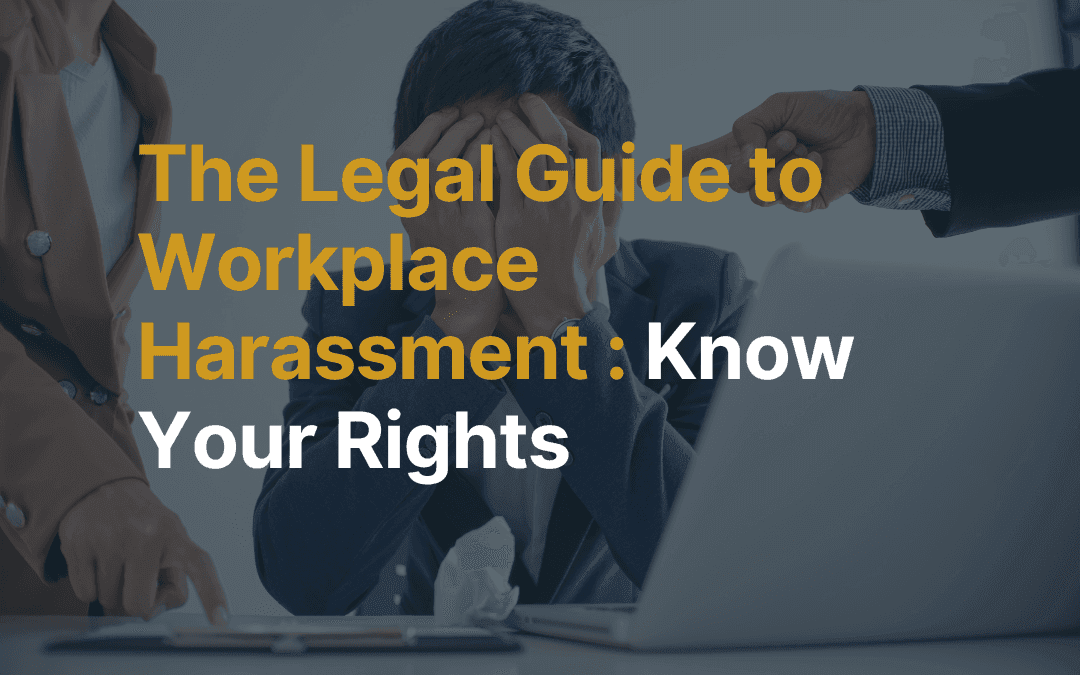Workplace harassment is a serious issue that affects employees across various industries. Understanding your rights and legal protections is essential for creating a safe and respectful work environment. In this comprehensive guide, we’ll delve into the intricacies of workplace harassment, empowering you with the knowledge to recognize, report, and address harassment effectively.
Page Contents
What Constitutes Workplace Harassment?
– Define workplace harassment and its various forms, including verbal, physical, and sexual harassment.
– Discuss behaviors such as unwanted advances, offensive jokes, discriminatory remarks, and bullying tactics.
Your Rights Under Employment Laws:
Title VII of the Civil Rights Act:
– Explore how Title VII protects employees from discrimination based on race, color, religion, sex, or national origin.
– Discuss how Title VII applies to harassment situations and the legal avenues for addressing violations.
The Equal Employment Opportunity Commission (EEOC):
– Explain the role of the EEOC in investigating and enforcing anti-discrimination laws.
– Outline the process of filing a charge of discrimination with the EEOC and seeking resolution.
State-Specific Laws:
– Highlight state laws that provide additional protections against workplace harassment.
– Discuss how these laws complement federal regulations and offer recourse for victims of harassment.
Recognizing Workplace Harassment:
– Provide examples of behaviors that constitute harassment, such as derogatory comments, unwelcome physical contact, intimidation, and retaliation.
– Discuss the impact of harassment on employees’ mental health, job performance, and overall well-being.
Reporting and Documenting Harassment:
Internal Reporting Procedures:
– Outline steps for reporting harassment to HR departments or designated supervisors.
– Emphasize the importance of following company policies and documenting incidents.
Creating a Paper Trail:
– Advise employees to keep detailed records of harassing behavior, including dates, times, witnesses, and any written communications.
– Discuss the role of documentation in supporting harassment claims and investigations.
Legal Remedies for Workplace Harassment:
– Explain the potential legal actions available to victims of workplace harassment, such as filing a formal complaint, pursuing mediation or arbitration, or initiating a lawsuit.
– Discuss the remedies that may be awarded, including monetary compensation, injunctive relief, and disciplinary actions against perpetrators.
Preventing Workplace Harassment:
Employee Training Programs:
– Advocate for the implementation of harassment prevention training for all employees.
– Discuss the benefits of awareness programs in fostering a culture of respect and inclusivity.
Promoting a Safe Work Environment:
– Encourage employers to establish clear anti-harassment policies and procedures.
– Highlight the importance of leadership in setting an example of zero tolerance for harassment.
If you have experienced workplace harassment or have questions about your rights, contact Hallinan Law Firm at (415) 837-3449 or email us at Contact@HallinanLawFirm.com. Our dedicated legal team is here to support you and advocate for your rights in cases of workplace harassment.
FAQs – Frequently Asked Questions:
Q1: What should I do if I am being harassed at work?
A1: Follow your company’s reporting procedures, document the harassment incidents, and seek legal advice if necessary.
Q2: Can I file a harassment claim anonymously?
A2: In most cases, you will need to provide your identity when filing a harassment complaint, but confidentiality measures can be put in place.
Q3: What if my employer retaliates against me for reporting harassment?
A3: Retaliation against employees for reporting harassment is illegal. Document any retaliatory actions and consult with an attorney.

